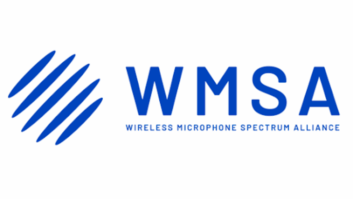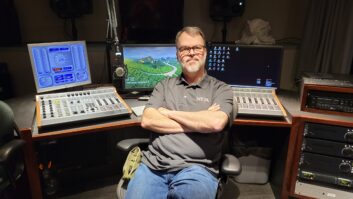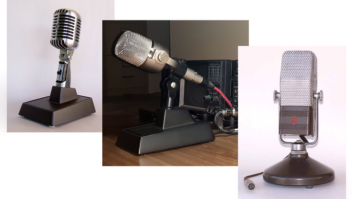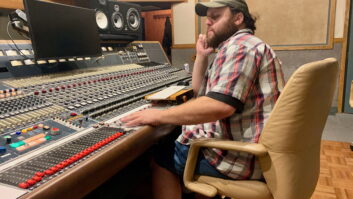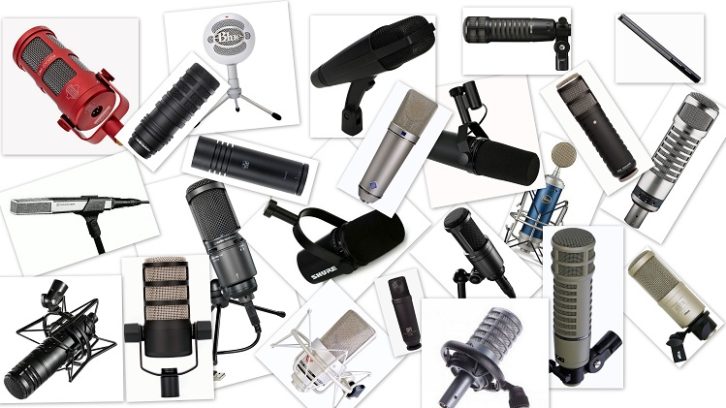
In a world … full … of microphones …
When I type that sentence I hear famed voice-over guy Don LaFontaine saying the words with his golden tones.
Although the world seems full of mics — and new ones coming all the time in the age of the podcast — not all mics are created equal. One size rarely fits all.
With podcasts flourishing and home studios proliferating, a lot of new mics are marketed as “voice mics” or as intended for “podcasting and broadcasting.” Some are very good, others may disappoint radio people who have come to expect certain quality.
[Related: “Today’s Microphones Offer a Buffet of Choices”]
In recent decades radio, or at least commercial U.S. radio, has tended to gravitate to a few very good models for studio work. For instance, the Electro-Voice RE20 (and its siblings the RE27ND and RE320) are common, as is the Shure SM7 and its variants, Sennheiser MD421-II, Heil Sound PR40 and a few others. You sometimes see Neumanns in radio studios and production rooms as well.
For voice work, it’s not uncommon to see a shotgun mic like Sennheiser’s MKH 416 being used, despite the original intention of that style for capturing distant sound. A user must know what they’re doing to use it for proximity voiceover situations.
Recently, decent USB microphones have hit the streets, and some are variations of mics we know and like, such as the USB version of the Shure SM7, called the MV7.
I’ve used a few other USB mics along the way for traveling (when a last-minute voice job comes in), and they work well in a pinch. Examples are Samson mics like the Satellite, the numerous Blue mic models and Audio-Technica’s 2020 USB.
Though it’s not common, a few manufacturers have combined USB and XLR connections into one microphone such as Audio-Technica’s ATR-2100 handheld.
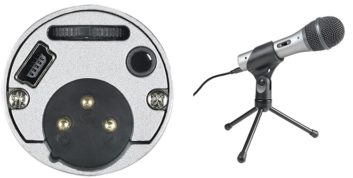
As I’ve explored these mics for my own voiceover work, I tend to go back to two mics depending on the job: the EV RE320 and the Sennheiser MKE 600 shotgun, which is more affordable than its cousin the MKH 416.
These are not USB, they have standard XLR connections. If you are married to XLR favorites, carry a XLR/USB adapter with you.
One important consideration is that USB connections are not nearly as durable or “repairable” as an XLR connection.
A different approach is to use a utility XLR-input mixer with a USB port, such as a Mackie ProFX, to get audio into your computer. The biggest advantage of this over an adapter or cable is the ability to take multiple mics (or outboard equipment) into the computer over one connection. The disadvantage is that this system is far less portable if your idea is to make the system portable and/or very simple to connect.
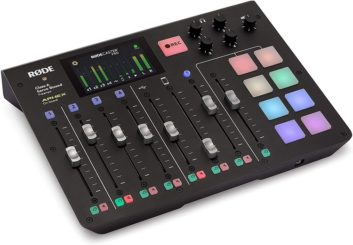
If you have the budget, there are excellent feature-packed dedicated mixers designed to be USB interfaces. A notable example is the Rode Podcaster Pro with multiple XLR inputs, mic processing, built-in recorder, quick-player pad and multiple headset jacks.
Not to be forgotten are the desktop audio interfaces for getting XLR-sourced audio into a computer. As with microphones, there has been a wave of desktop digital audio converters at all sorts of price and feature points on the retail market. An examination of those would be an article in of itself.
Making Choices
As always, it’s advisable to demo a mic before buying. To narrow prospects, the internet can provide a wealth of information and helpful videos.
The website Podcastage, for example, has a video in which the host compares no fewer than 14 dynamic broadcast mics from EV, Shure, Rode, Audio-Technica, MXL, Golden Age, Heil, Neumann, Aston, Telefunken and ART.
It’s comprehensive (though the way he stacks the mics in his arms at the beginning made me cringe).
Keep in mind that asking someone which mic is best is a pretty subjective question. Voices, rooms, hardware and any processing vary so if you are tailoring the mic for one particular person or situation, that will have an impact on which one to choose.
[Read more of our Microphone Month coverage.]
>>>
Mic Sampler
Here’s a list of mics on the market for podcasting and radio work; by no means is this a complete list. Prices are MSRP. Important: Veteran shoppers know that most popular mic models are usually sold at a good discount from dealers, so shop around.
ART D7 — $269
Aston Stealth — $379
Audio-Technica AT2020 — $99
Audio-Technica AT2020USB+ — $149
Audio-Technica BP40 — $349
Blue BluebirdSL — $299
Blue Snowball iCE — $49.99
Blue Yeti — $129.99
Electro-Voice RE20 — $609
Electro-Voice RE27N/D — $700
Electro-Voice RE320 — $337
Golden Age Project D2 — $150
Heil Sound PR40 — $329
M-Audio Nova — $35
MXL V87 — $199.95
MXL 990 — $99.95
MXL BCD-1 — $149.95
Neumann BCM 705 — $849
Neumann TLM 103 — $1,349
Neumann U 87 Ai — $3,999
PreSonus PD-70 — $169.95
Rode PodMic — $150
Rode Procaster — $369
Rode NT1 Kit — $395
Samson Satellite — $148.99
SE Electronics V7 — $129
Sennheiser MD 421-II — $399.95
Sennheiser MD 441-U — $999
Shure SM58 — $124
Shure SM7B — $499
Shure MV7 USB — $311
Telefunken M82 — $459
Zoom ZDM-1 — $79.99
>>>
XLR to USB
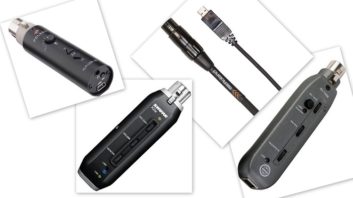
If you just can’t leave your XLR microphone behind try an XLR-to-USB adapter:
Polsen XLR-USB-48 XLR to SUB adapter — $51.95
Roland Black Series USB to XLR Cable — $35.99
Senal XU-1648 XLR to USB adapter — $123.95
Shure X2u XLR to USB adapter — $99
